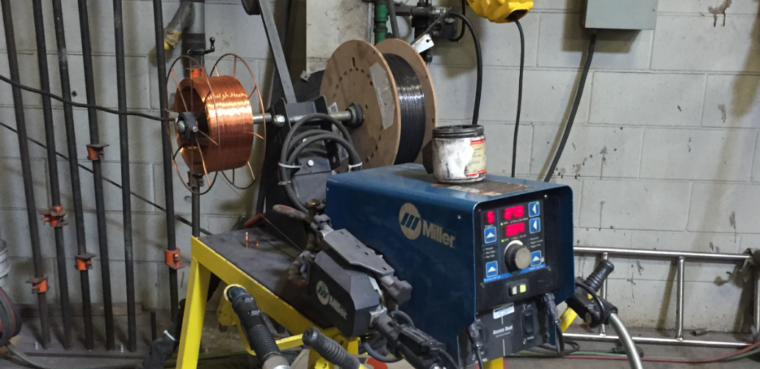
If you own, run or work at a welding facility you have undoubtfully had to troubleshoot bad welds. Troubleshooting is necessary in order to solve problems, but if you do not have a clear methodology or process for troubleshooting it can be a huge source of downtime.
To properly troubleshoot bad welds, we must have a good understanding of the effects of the many different welding variables. These include, but are not limited to:
- Amperage
- Voltage
- Travel speed
- Work & travel angles
- Contact tip to work distance (CTTWD)
- Shielding gas type
- Shielding gas flow rate
- Electrode type
- Electrode diameter
- Joint details (root opening, bevel angle, root face, material thickness)
- …and the list goes on and on
Once you are armed with this knowledge you still need to have a process for troubleshooting. Where many fail is in always blaming the equipment or the consumables. But there are five main areas that we must consider when troubleshooting bad welds. Whenever a problem arises the first thing you must ask is “what has changed?” Many time the answers is “nothing,” but we must always dig deeper.
Every time a problem arises, every time a bad weld is made when before we were making good welds, something has changed! It is not always easy to find, but something has changed. The key to troubleshooting is to identify just that, what has changed.
Consider asking the question “what has changed?” for each of the following five areas. We are proving several examples per area to get you on your way to identify the root cause.
Welder
- Do we have a new welder that may not yet have the necessary skills?
- If it a seasoned welder, is he or she welding on something new to them?
- Are they having to compensate for other factors (i.e., change torch angle, change CTTWD, gas flow rate, etc.)?
- Can the welder simply be fatigued?
- Has the welder changed the welding procedure?
Base metal condition and preparation
- Is the base metal surface condition the same or do we have surface contaminants?
- Is the base metal from the same batch or is it a new batch?
- Is the base metal being supplied by a different steel/metal supplier?
- Is the fit up different than before?
- Have the joint details changed?
- Is the base metal coated or painted or rusted?
- Is the thickness of the base material different?
Environmental changes
- Has the temperature and/or humidity changed drastically lately in the shop?
- Is there wind from open bay doors or from fans?
- Are there obstacles forcing the welder to welding in a different position
- Is the welding being done in a different location (i.e., outside vs inside)?
Welding consumables
- Have you switched welding filler metals brands?
- Have you switched to a different type or diameter of wire?
- Is the filler metal affected by moisture (have storage conditions changed)?
- For wire processes, is the filler metal wound differently?
- Has the wire spool changed? (i.e., from a plastic spool, to a wire cage or to a fiber spool)
- Is the filler metal rusted, moist or excessively dirty?
- Is a different type of shielding gas being used?
Equipment problems
- Has the equipment been moved to a different location (may be affected by ventilation, excessive grinding dust, fluctuating power, etc.)?
- Has the power chord been replaced?
- Have the drive rolls been changed? (For wire processes)
- Is a different welding machine being used?
- Is the same welding mode being used?
- Have the welding cables been replaced recently? Are they the correct size?
- Have the welding cables been damaged recently?
- Have the welding cable connections loosened up causing voltage drops?
- Has the welding machine been cleaned lately (inside)?
As you can see, there are so many things that can changes, but the quick answer is always “nothing has changed.”. In our experience, asking many questions such as the ones above are what get you on the right track to troubleshoot properly and arrive at the root cause.

Please note: I reserve the right to delete comments that are offensive or off-topic.